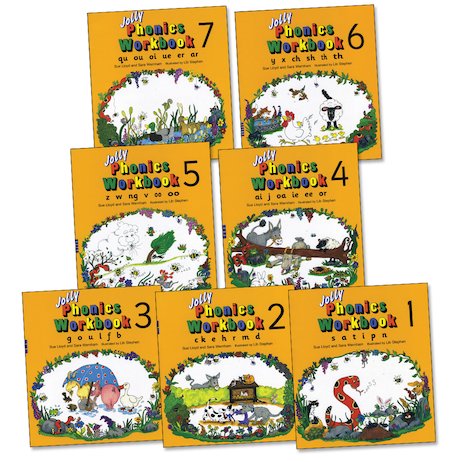Phonics is described as the ability to identify, produce and manipulate phonemes. Through instruction and repetitive activities, students begin to establish a connection between sounds (phonemes – the oral part of language) and how those sounds are represented through letters (the written part of language). This “food group” is effective when taught to younger students to develop a foundation for language by reinforcing the relationship between written and oral productions.
Understanding
- Book – Classrooms That Work, Chapter 5: Teaching Phonics and Spelling Patterns (by Patricia Cunningham and Richard Allington)

Phonics is an important tool used to decode language, specifically when reading. As children develop the understanding that each letter (or combination of letters) is associated with a phoneme (or multiple phonemes depending on the case), then they are able to sound out and decode words when reading. This book clarifies the important connection between sounds and letters. It also takes into consideration the perspectives of ELL’s and how some graphemes might have different sounds attached to them in various languages. This is an important consideration for a teacher who is working with developing readers and pluri-lingual students.
- Book – Phonics and Word Study for the Teacher of Reading, Chapter 1: General Knowledge and Concepts (by Barbara J. Fox)

For someone without a linguistic background, this book is an extremely clear and concise way of defining phonics and it illustrates key terminology like a grapheme vs. a phoneme. Barbara Fox further develops her explanation by underlining the importance of phonics and how it develops eventually into fluent reading. She also includes a section about current pedagogical research surrounding teaching phonics and the ideal setting to teach it. There are lots of tips in this book for beginning or even experienced teachers to understand phonics and how to effectively teach it.
- Book – From Phonics to Fluency: Effective Teaching of Decoding and Reading Fluency, Chapter 4: Teaching Phonemic Awareness (by Timothy Rasinski and Nancy Padak)

Chapter 4 of this book highlights the importance of phonemic awareness and how this skill progresses as a child becomes a more fluent reader. As students get older, they begin to process sound blends and understand that some combinations of letters can be associated with multiple phonemes. Timothy Rasinski and Nancy Padak also suggests various research-based strategies to assess and teach phonemic awareness. He suggests different interactive games that include drama and writing exercises to make learning more engaging.
Instruction
- File Folder Phonics – http://blog.maketaketeach.com/even-more-file-folder-phonics/#_

This teaching strategy allows students to tailor their learning to their own needs. Each letter of the alphabet has a file folder with activities inside such as creating the letter out of play dough, tracing and writing the letter, sorting pictures to create a group where each object starts with that letter, and using letter tiles to create words using that letter. This allows children to scaffold the activity and practice making connections between letters and sounds by working on an activity of their choice.
- Letter of the Week – http://www.oise.utoronto.ca/balancedliteracydiet/Recipe/50259/
This is an activity directed for students in kindergarten and grade 1 in order to reinforce the relationship between sounds and the letter. Each week the class focuses on a specific letter and this teacher has different activities to work on phonics. Somethings students could do would be to sing a song about the letter and its sound, find objects in the room that start with that letter, read a book or posters in the room to create a tally of how many times that letter appears.
- Drive Thru Blending – http://www.oise.utoronto.ca/balancedliteracydiet/Recipe/00214/

On a whiteboard, break down a word into sounds, then have a student use a car to slowly drive through the sounds, pronouncing each one. Move the car faster and faster until the sounds have blended to form one word. This allows students to pronounce each phoneme individually and work on articulation or sounding out more complex words.
Assessment
- Letter-Sound Clip Cards http://www.themeasuredmom.com/52-free-cards-for-teaching-letter-sounds/

There are little cards that have individual pictures on them and three different letters across the bottom. The child is responsible for saying the word represented by the picture and figuring out what letter it starts with. They then use a clothespin or dry erase marker to highlight that letter. Individually test students and ask them to pronounce the word aloud/explain their thinking.
- Book Series’ such as Reading A-Z Decodable Books or Jolly Phonics.


These series look at specific letters or letter blends in order to help children develop phonemic awareness to help reading fluency. They vary in difficulty so children can progressively work their way through the books. Jolly Phonics works on specific skills including learning letter sounds, learning letter formation, blending, identifying specific sounds in words and reading words that don’t follow a regular spelling pattern. Reading A-Z Decodable Books starts with individual sounds, then blends and moves on to word families. These are a good diagnostic tool as well as formative assessment to track a student’s progress as they develop a better understanding of phonemes.

Leave a comment